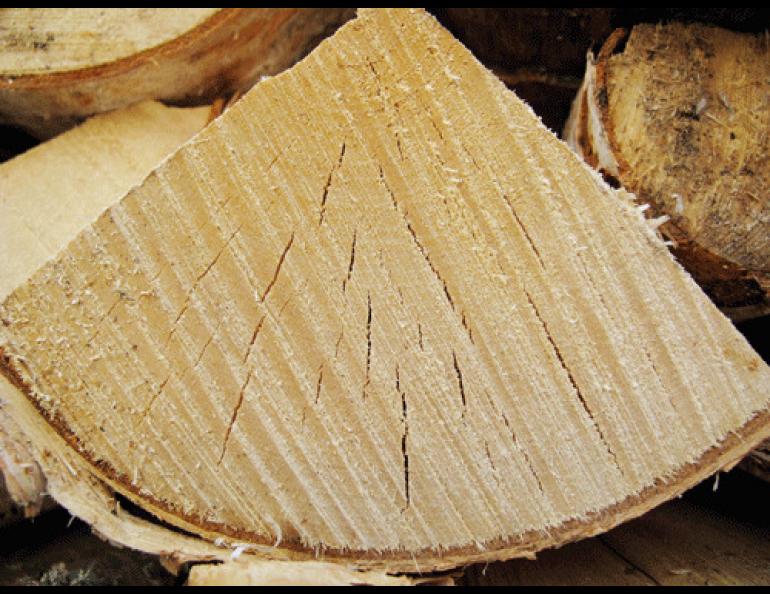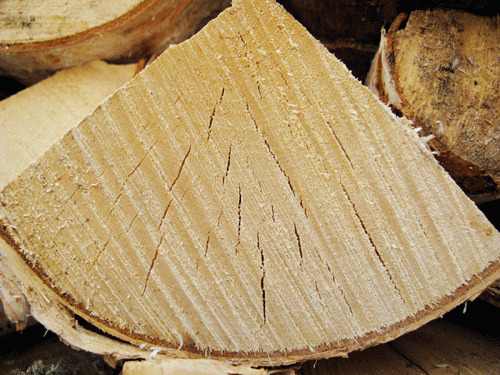
Dry wood is good wood
A friend says that among his most satisfying moments are those he stands contemplating his pile of firewood. He inhales the sweetness of birch, the tang of aspen and the sharp bite of spruce while he ponders the moisture wafting out of his wood.
My friend knows how to have a good time. And he is appreciating a process that is important in places where people burn wood and release its smoke into an air column that doesn’t stir much in winter — burned dry wood results in much better air quality than wetter wood.
“I think it’s a big issue,” said John Davies, a longtime woodburner and senior researcher for energy policy at the Cold Climate Housing Research Center in Fairbanks. Researchers at the center recently collected firewood from people in Fairbanks to check it for moisture content, and are also measuring the drying progress of cordwood they have stacked on the grounds of the center in Fairbanks. Fairbanks often exceeds Environmental Protection Agency air quality standards. Its poor winter air quality is due in a large part to the emissions from wood smoke. People make the problem worse when burning unseasoned wood.
“If you go from 20 to 30 percent moisture content in wood, just a 10 percent increase, there’s a 67 percent increase in PM 2.5 (particles in the air that are harmful to breathe),” Davies said.
Experts on the matter claim that firewood is at its best as an energy source when it contains 20 percent moisture or less. The average wood burner probably doesn’t possess a moisture meter or have the time to put her wood into an oven and calculate its dryness via before-and-after weights, but there are simpler methods to get a ballpark figure.
“When you look at your woodpile and your logs have a lot of checks in them, and if you get a hollow sound when you knock them together, you’re probably in the 25 percent or less realm,” Davies said.
Dry wood also doesn’t hiss or bubble when burned.
Foresters at the Alaska Division of Forestry were so impressed with Fairbanks fourth-grader Linnea Schultz’s science project that they displayed Schultz’s poster, “A burning question: how long should birch firewood be dried?” at the Tanana Valley State Fair in Fairbanks. Schultz concluded that birch firewood that had been split and dried for 16 months had more than 20 percent moisture remaining. She found that split birch dried for 28 months “had a moisture content below 16 percent and was dry enough to burn properly.”
Green, split firewood “cross-stacked” on pallets and covered with a sheet of plywood at the Cold Climate Housing Research Center dried to about 16 percent moisture during one hot Fairbanks summer, Davies said. Humid and damp areas require much longer air-drying times.
“I think people down in Juneau just watch their wood get moldy,” he said. “I’m being facetious, but the amount of moisture in the air makes a big difference as to how fast firewood dries.”
As for his own wood supply, Davies prefers to have two years’ worth in his shed.
“That way, the stuff you’re cutting this spring isn’t for next winter, but for the winter after,” Davies said. “That means you have to have storage space for two years.”
Davies uses about three and one half cords of firewood each year, so he has a wood shed that can accommodate about seven cords. This ideal wood-drying scenario can be a challenge for those heating very large spaces or using outdoor wood boilers that require huge amounts of wood, Davies said.
“They might use 15 cords per year, so that means you’ve got to store 30 cords. That’s a big pile of wood.”





